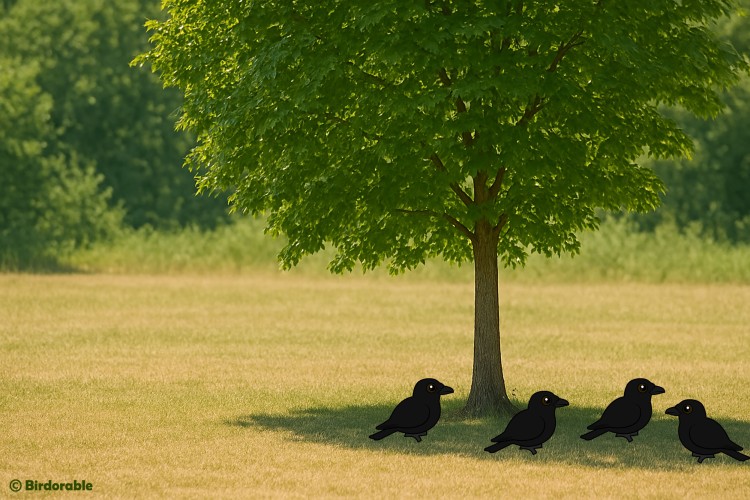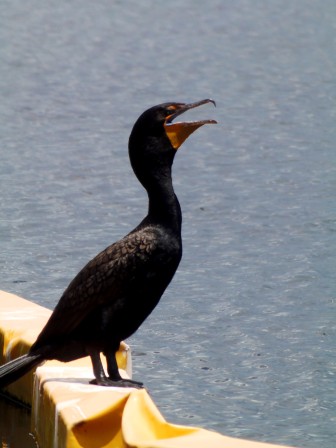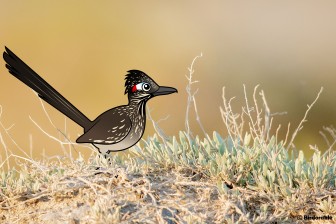Summer Blog Series
Keeping Cool: How Birds Handle Hot Weather

American Crows seek shade on a hot day
When temperatures rise, birds have to work hard to keep cool. Unlike humans, birds don't sweat. So how do they survive the summer heat? Birds have evolved several clever ways to regulate their body temperature and stay safe when the sun is blazing.
One of the first things birds do when it's hot is seek out shade. They’ll retreat into dense shrubs, trees, or the shadowed side of buildings. Many birds become less active during the hottest part of the day and save their foraging and other activities for early morning or late afternoon when it's cooler.
Birds also rely on water. Bathing in shallow puddles or birdbaths helps them cool down and keeps their feathers in good condition. You might also see birds spreading their wings and holding their feathers away from their bodies to let air circulate and carry away heat. Some species, like Turkey Vultures, even urinate on their legs in a process called urohidrosis—when the liquid evaporates, it cools their blood vessels.

Panting Double-crested Cormorant by Rusty Clark [CC BY 2.0]
Panting is another common cooling method. Just like dogs, birds will open their beaks and breathe rapidly to increase evaporation from the respiratory system. This helps release excess body heat. Some birds, like owls, cormorants, and herons, use a technique called gular fluttering, which involves vibrating the throat tissues to boost cooling without expending much energy.
Feathers play an important role, too. Feathers act as a barrier that protects a bird's skin from direct solar radiation. This insulation works both ways—while feathers trap warmth in cold weather, they also reduce heat absorption by reflecting sunlight and blocking UV rays. This is particularly important for birds in sunny, arid regions.
Birds can fluff up their feathers to allow air to circulate close to their skin. This movement of air helps dissipate excess heat. Conversely, they can press feathers down tightly to reduce airflow and conserve warmth when needed.

Birds also adjust their behavior based on the season. Desert species like the Greater Roadrunner are especially adapted to extreme heat. They’re active mostly in the early morning and rest in the shade during midday. Nightjars, which are nocturnal, avoid the heat entirely by being active only after dark.
You can help backyard birds stay cool by providing clean, fresh water in birdbaths or shallow dishes. Place them in shady areas and clean them regularly. Planting native shrubs or trees can also give birds much-needed shelter during the hottest times of day.
Watching how birds handle the heat can be fascinating—and a great reminder that all animals, including us, need to adapt to our changing climate. Whether it’s panting, perching in the shade, or finding a cool bath, birds have plenty of tricks to beat the heat.





Comments
Be the first to comment
Thank you!